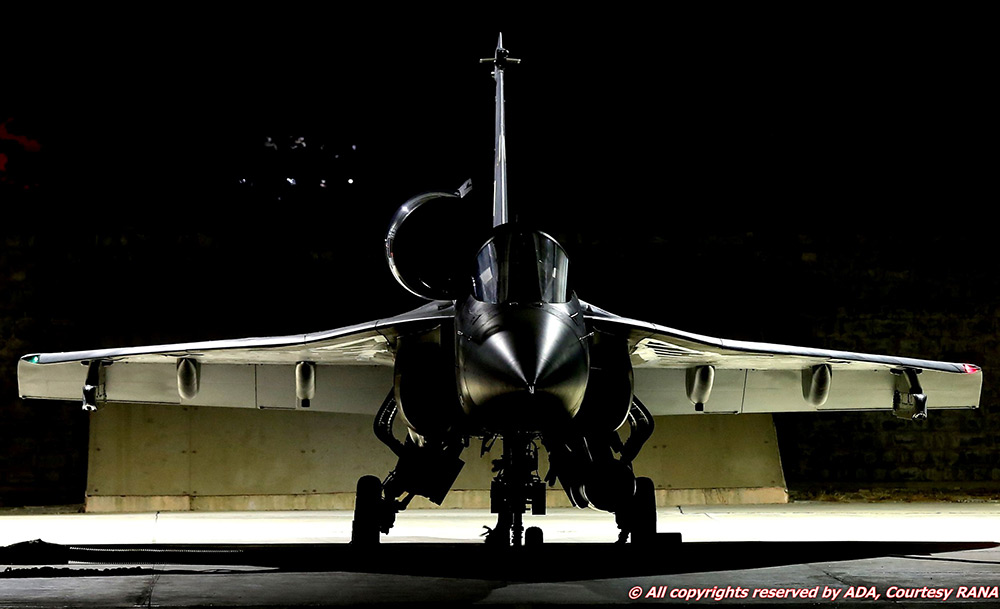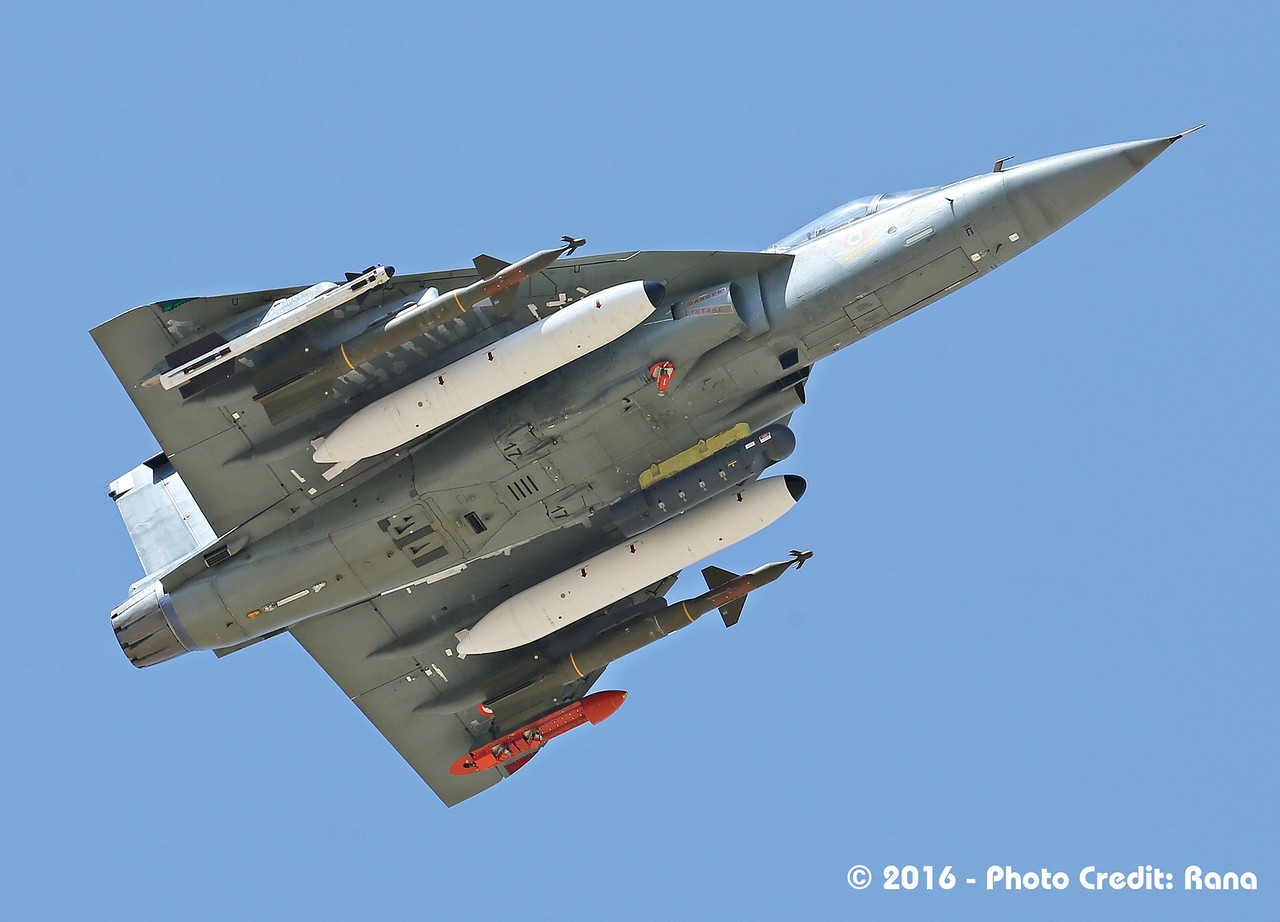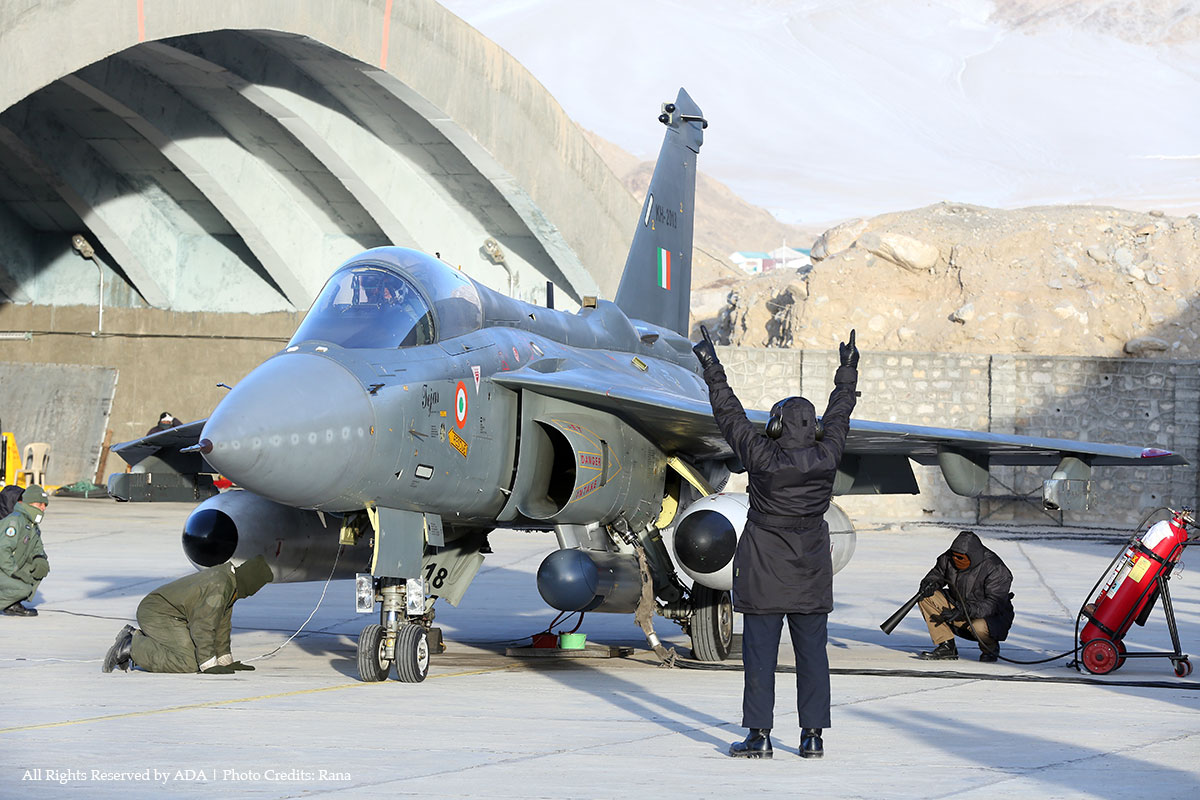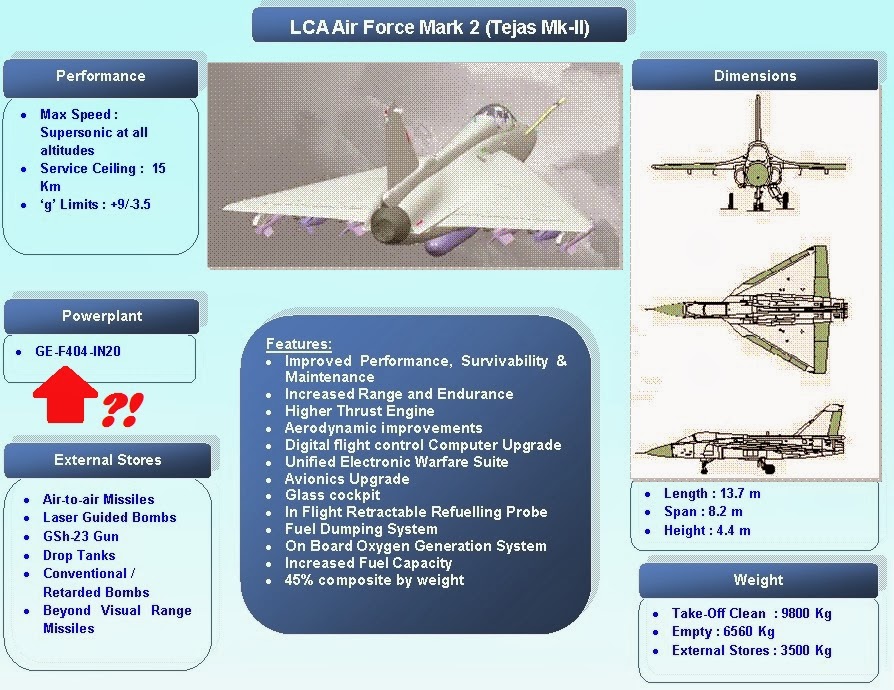AKD
BANNED

- Joined
- May 20, 2016
- Messages
- 1,092
- Reaction score
- -29
- Country
- Location
Follow along with the video below to see how to install our site as a web app on your home screen.
Note: This feature may not be available in some browsers.






Small yet majestic
Team Tejas rewinds the testing time, it had undergone with this image of LSP-7 (KH -2017) taking off at AFS, Utarlai with 2X1000lbs MK11, 2 X1200 Ltr External drop tanks, 2X camera pods with high speed cameras and the LDP (one of the few heavier take off configurations)
New Recruit
Actually, ADA still building Super Duper Technology called DSI for LCA MK-2 Navy, that's why only 2 is more than enough to show that it has a bird that can fly. Have a deep Sleep now Superboy/ultron.

DSI.. can u shed some more light on tht?

Sourabh joshi
The naval program for India’s indigenous Tejas Light Combat Aircraft (LCA) is set to face a feasibility review and Defense Minister Manohar Parrikar has asked for a recommendation on its future within the next couple of months.
As reported by StratPost, the navy has been compelled to take a decision on whether to continue with the LCA program after the Indian Air Force (IAF) announced their purchase of 80 LCA Mk1(A) aircraft, last year, in addition to the 40 Mk1 aircraft already on order. A Request For Information (RFI) has been issued to foreign Original Equipment Manufacturers (OEMs) for the requirements of the LCA Mk1A configuration, which include an AESA radar, Electronic Warfare Suite, Electronic Support Measures Suite etc.
The Chief of Air Staff, Air Chief Marshal Arup Raha had clarified that at the time they were ‘not looking’ at the proposed LCA Mk2 with the more powerful GE F414 engine, which is still to be developed.
The navy’s requirements demand an LCA powered by this same engine and it has been considering whether to fund the development of the Mk2 in its own since October. The existing naval prototype of the LCA is based on the existing Mk1 design. The development of the naval version has focused on ‘aerodynamic enhancements to improve low speed performance for carrier operation, addition of arrestor hook for deck recovery, need for a stronger undercarriage and cockpit redesign for naval operations’, according to the official Tejas LCA website.
According to naval sources, the naval LCA is increasingly likely to now be restricted to the role of a technology demonstrator, although there has been some discussion of a possible role as a front line fighter trainer.
The navy has also set up a test flying team at INS Hansa for trials, not only on the naval Tejas LCA, but all other naval aviation platforms and systems. The navy began arrested recovery trials recently. These trials include high sink rate approaches, touch-and-goes, full stops, and then finally arrested recovery ashore.
INDIGENOUS AIRCRAFT CARRIER-2 (IAC-2)
With the MiG-29K aircraft based on the INS Vikramaditya, and further destined for the Indigenous Aircraft Carrier-1 (IAC-1), INS Vikrant, attention is shifting to the air wing requirement of the second Indigenous Aircraft Carrier, IAC-2.
According to sources in naval aviation, the navy has virtually decided on a design that includes nuclear propulsion, CATOBAR (Catapult Assisted Take-Off But Arrested Recovery) operation and EMALS (Electro Magnetic Aircraft Launch System) for the proposed 65,000 ton carrier, although there is some dispute as to whether the expected tempo of operations is such as wouldn’t be better and more economically served with a steam catapult.
The reason for the selection of a CATOBAR aircraft carrier is that aircraft CATOBAR-launched aircraft can launch with heavier loads which translates to increased range and carriage of weapons and sensors. This is also the reason the MiG-29K is not under consideration for the IAC-2, since it is a Short Take Off But Arrested Recovery (STOBAR)-capable aircraft.
Sources said that the air wing of IAC-2 will comprise a total of around 65 aircraft, including 25-30 fighter aircraft. The rest will consist of helicopters and Airborne Early Warning (AEW) aircraft.
FIGHTERS FOR IAC-2
In the long term, the navy will focus on the development of a naval Advanced Medium Combat Aircraft (AMCA), but in the nearer term, the navy will be looking at acquiring CATOBAR-capable fighter aircraft for IAC-2. Only three contemporary aircraft are capable of such operations today – the Boeing F/A-18 Super Hornet, Dassault Rafale M and the Lockheed Martin F-35C.
And although the Government of India is currently negotiating for 36 Rafale aircraft for the IAF, Boeing and the U.S. Government have offered to set up an assembly line for the twin-engine F/A-18 in India.
But an Indian Navy order for Super Hornets could well depend on the existence of an Indian assembly line because of timelines. Boeing has orders to keep its assembly line going till 2019-2020. An Indian Navy order to equip IAC-2 is unlikely to materialize before the middle of the 2020s, in which case, the only way for the navy to order Super Hornets would be if an assembly line were running in India, for the IAF.
Sweden’s Saab has also offered to set up an assembly line for their single-engine Gripen in India. And although they have circulated the idea of a CATOBAR-capable naval Sea Gripen variant, it remains a concept at this stage.
Both the F/A-18 and the Gripen are powered by the same GE F414 engine.
http://www.stratpost.com/naval-lca-face-reckoning-as-navy-mulls-catobar-fighters







zebra7 said:Now this is called the TRUE Great Defence Reporting and what a great Author Saurabh Joshi a journalist based in New Delhi, India who has worked in print, television as well as internet news media. Besides defense and strategy, his past assignments have ranged from reporting terror strikes to elections. He has studied journalism and law at the University of Delhi.
Lets check his contribution with the Pen.
http://www.stratpost.com/navy-to-review-lca
19 Oct 2015
Naval sources told StratPost that with the IAF interest in the development of the Mk2 now appearing uncertain, the navy would have to undertake a process to determine if they can continue to fund development of the model on their own, keeping in mind ‘already sunk costs’, their requirement number and the expectation that the model would not be ready before 2024 as well as the imperative of indigenization.
But there would never be the name of the so called NAVAL SOURCE.
Now Reporting on SAAB
12 Feb 2016
http://www.stratpost.com/saab-to-partner-kalyani-on-vshorad-srsam-production
21 Feb 2016
http://www.stratpost.com/video-saab-swordfish-mpa-at-the-singapore-airshow-2016
21 Feb 2016
http://www.stratpost.com/video-saabs-rbs70-ng-at-the-singapore-airshow-2016
12 march 2016
http://www.stratpost.com/iaf-admits-unprepared-for-2-front-defense
Then on April 19 was the Beauty
http://www.stratpost.com/race-sell-fighters-india
He mentioned three contendor -- F-16, F-18, and Gripen, first praising F-16 to give the best advantage but mentioned that it is with the PAF, then very Cleaverly post the statement of Saab’s India head, Jan Widerström laid out the offer, saying:
We’re not offering a product. We’re offering a long-term aerospace capability for the next hundred years to India. And that aerospace capability I hope will play a major role in supporting India in developing the next generation fighters for the future.
Then mentioned that since Indian Navy is not interested in LCA MK-2, but SAAB have the concept of SEA Gripen. (In reality, SAAB don't have an experience in the Carrier based fighter plane, nor have any Carrier)
On 10th June
http://www.stratpost.com/iaf-chief-flies-gripen
Offcource, the IAF Chief himself goes to Sweden to talk about the Gripen Sale to India.
With enough material on 10 june two more article
http://www.stratpost.com/saab-lays-gripen-make-india-plan
http://www.stratpost.com/saab-adds-gan-aesa-co-dev-to-make-india-gripen-pitch
Cutting Edge GaN based Aesa Tech, which they want to Co develop with the India -- 5 year atleast for the first Prototype, means why wasting time and money on Uttam.
@@@@@@@@@@@@@@@@@@@@@@@@@@@@@@@@@@@@@@@@@@@@
I want every one to combine all the article written by a single author, and check the direction of wind which way it is flowing, and what is the Source of the Wind.
1. SAAB is threatened with the MK-2 version of the LCA. Trying too hard to kill the project.
2. Looks as if they are dying for Indian market.

3. Posted the Parikar Statements
In April 2015, he said, “A replacement (for the MiG-21) could be the LCA Tejas or another – I’ll not call it low end – but a single engine lighter aircraft. Tejas is a good aircraft but it has its limitations.”
And last February, he said, “We might select few aircraft to Make in India. Which one? I don’t commit. But there will be at least one, may be two also.”
There could well be two new assembly lines set up in India. For both single-engine and twin-engine aircraft.
Lets see how the Words are Twisted.
First statement was given for the question asked, why India is pitching for Rafale, when Two or three LCA Tejas could be bought for that Money. The Parikar said, that LCA is a world class 4th Gen. aircraft (That's why he is not calling it low end) but it has certain limitation such as Range, Weapon Load etc, Why this statement is posted in the Article, is because to show that LCA have limitation, thus looking for the replacement with F-16, or F-18 or Mighty Gripen.
Second statement for Make in India, that we might select few aircraft to make in India, but there will be atleast one -- And that One is Combat Hawk -- with first flight sheduled on 2017. Ok now for the second, and the third he didn't mentioned any name but added May be, means there would talks with different OEM but it could be any aircraft -- fixed wing, comercial line, transport aircraft, or Hellicopter too. And Make in India, do not naturally means it will serve India Defence, rather the Production line in India, because to build the India into AERO space hum is the main objective of the MII. Even US can transfer C-170 or C-17 line to India.
Third Statement states the two new assembly lines setup in India for both single and twin engine aircraft -- and those are LCA tejas MK-1 which needed seperate assembly line to fullfill the IAF order quickly, and the twin engine aircraft is Rafale, which will be setup by the OEM Dassault with the Pvt Indian company.

Revealed: The LCA Tejas That The IAF Has Chosen
Shiv AroorJun 27 2016 12 25 pm



India’s home-built Tejas light fighter will finally be formally in squadron service with its primary customer, the Indian Air Force, starting Friday. On July 1, the Indian Air Force’s is all set to induct a pair of series production airframes of the Tejas Mk.1 at a planned event there’s a conspicuous lack of noise about. Sure, the number of aircraft being inducted will be a tenth it takes to call itself a real squadron. And sure, the Tejas won’t be zipping off on combat air patrol or air defence duties immediately. But the significance of July 1 has perhaps already been lost in the turbulence of both the programme, as well as the way it has by default been regarded.
In October last year, your site had advocated that the LCA Tejas needs to see service as quickly as possible. That, in a sense, is what will be beginning to happen this Friday. But as you’ve probably heard already, it isn’t the Mk.1 type of the Tejas that has the IAF all lit up, but a configuration it agreed on last year designated the Mk.1A that’ll form the true Tejas backbone in service — 80 aircraft, with the possibility of 40 more have been ordered. In the tumult of operational clearance points and timelines, not very much has been reported on the Mk.1A itself and why the IAF has its sights set on the type, and what has been reported is mostly broad.
The known updates are clear. The Mk.1A will be mid-air refuellable, sport an updated internal Radar Warning Receiver (RWR) — likely in-house kit from the DRDO’s DARE laboratory — an external Self Protection Jammer (SPJ) pod to enhance survivability and an AESA Radar, both of which the Tejas programme is scouting international suppliers for. The IAF has also stipulated that the Tejas Mk.1A needs to be able to fire different types of BVR and close combat air to air missiles. The Tejas has so far fired Vympel R-73 CCMs and a Derby BVR missile. It’ll need to prove itself using the R-77, Python-5 and DRDO Astra too. Those, Livefist learns, are on track.
The meat of the Mk.1A will be a slew of major improvements in the LCA’s squadron-level maintainability contours. It is difficult to overstate just how much importance the IAF has placed on ramped up no-nonsense maintainability, more than a milestone away from the admittedly unwieldy maintenance architecture built into the Mk.1. On maintainability alone, the Tejas Mk.1A will have the 43 improvements out of 57 planned on the bigger, more powerful Tejas Mk.2:
But what about the Tejas Mk.2? The planned up-engined, beefed up Tejas variant has hit a bit of a vacuum now, with the IAF all but pronouncing that it won’t be pursuing the type. A contest awarded to GE for the the F414-GE-INS6 turbofan engine hasn’t translated into a contract yet. But the Mk.2 programme is still very much on. A top official told Livefist, “As far as ADA and HAL are concerned, we are progressing design and development of Mk.2 as it has been approved by the Govt. There are benefits in continuing with it.”
- Panel interchangeability: In the prototype stage, composite panels were built and matched to specific airframes. For the Mk.1A, tooling will be built up and panels moulded lending themselves to easy interchangeability between airframes, plus spares. The IAF won’t deal with a platform that doesn’t allow at least this level of squadron-level maintainability, so this is priority.
- Quick access: Several airframe panels that required daily servicing have a large number of screws that need to be removed — a time consuming affair that eats into the platform’s turnaround time. These will be replaced on the Mk.1A by quick release fasteners making it easier and faster for maintainers access, considerably bringing down time required to service aircraft. Importantly, quick release fasteners will remain with the panel and therefore minimise FOD chances.
- Gromets in composite panels: When fasteners are regularly used for removal and installation, there is a possibility of damage and widening of holes. Mk.1A panels will have to stop this.
- LRU positions: A number of LRUs will be repositioned for better access. Current configurations make it nuisance to access frequently used LRUs.
- Additional aids: The Mk.1A package will contain ground handling aids and testers to enable speedier turnaround of aircraft

Improvements planned on the Tejas Mk.2, apart from the more powerful engine and attendant expansion of op envelope, include new sensors, new indigenous actuators, and a new indigenous avionics architecture. The variant will also involve the removal of 250 kg in ballast weight, a further half ton weight reduction through revised design factors, performance improvements by “aerodynamic refinements of geometry”, an internal electronic warfare suite (incorporate in the Mk.1A plan), a brand new suite of indigenous avionics systems currently under development, a new digital flight control computer, OBOGS for mission endurance. Crucially, the Mk.2 will also sport an additional LP bleed port from the engine, a safety feature to ensure crucial backup for flight-critical Bleed Air Shut Off Valve (BASOV) failure for fuel tank pressurisation. In addition, the type will get fuel system improvements, NVG compatible external lighting with LEDs.
http://www.livefistdefence.com/2016/06/revealed-the-lca-tejas-that-the-iaf-has-chosen.html?utm_source=twitterfeed&utm_medium=twitter&utm_campaign=Feed:+blogspot/UQMw+(LiveFist+-+The+Best+of+Indian+Defence)
Source: https://defence.pk/threads/revealed-the-lca-tejas-that-the-iaf-has-chosen.436743/#ixzz4ClnMV8X4

